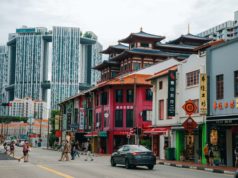(Farmer Melchor Correa of San Jose City pours his newly harvested milk from one of his dairy carabaos into a milk canister. He harvests daily an average of 57 liters of milk, worth P3,078, from his eight lactating animals. Photo by Elmo Roque)
ABOUT a decade ago, the usual talk in pained tone by the farmers in a village in San Jose City, Nueva Ecija, was their unremitting bondage to hopelessness. The harvests from their rice and vegetable farming was in up-and-down state, their margin of profit in pittance as cost of inputs went higher, their debts mounted, and their dreams for a better tomorrow regretfully unreachable.
Until they were introduced to carabao dairying. And, they speak no more in pain but in blasts of unbounded glee.
One of them, Melchor Correa, 47, is unabashed in talking about his unshackled bondage to hopelessness in the past and never tires in inspiring others to follow the path he has threaded. He is a towering figure in the “White Revolution” launched in the province years back.
He affirms that this revolution, although fraught by sacrifices, determination and dogged commitment, is worth it – for what successful undertakings are not without those virtues?
“Nakabaon po noon talaga sa kawalang pag-asa (Burried in hopelessness then),” Correa says. “It was a hand to mouth existence then and our children seemed destined to follow our paths,” he added in Tagalog.
Then he got wind about carabao dairying – a relatively new venture that makes use of the carabao’s other breed. The ascribed promised of hope lies on the oozing milk of this mammal and the concomitant carabao-based enterprises. It was unheard of then, as he only knew the carabao was just an ally in farm works. But, it has its other importance: that of directly providing precious food and promise of daily income as opposed to the seasonality of rice and vegetable farming. They were certainly compelling attractions.
“From one, I now have a herd of 30 dairy carabaos, eight of which are lactating,” Correa proudly said.
Prouder was he as he reported of his average daily milk yield.
“It is 57 liters,” he said. “I sell it at P54 a liter,” he added.
That’s a cool daily income of P3,078, which in his wildest dream then he could not have imagined. “I expect my 16 pregnant dams to give birth during the year,” he said. “They will go on yielding milk for ten months,” he added.
His gains so far, he disclosed, are windfalls for a former downtrodden farmer: a concrete house built on a purchased lot, one hectare more of a rice field, a lot and a functional corral with milking parlor for his animals, a brand new owner-type jeepney, a second-hand car, two motorcycles, several home appliances, and above all the concretization of a dream to see one of his children go up the stage to receive a diploma for finishing a college course.
Correa understood that the “white revolution” in the province is corollary to championing the province as the “National Impact Zone” for the carabao-based enterprise development. It is designed to change the frontiers in the practice of agriculture that he knows.
The movement recalls to mind the “Green Revolution” which begun in Mexico in the 1940s and spread worldwide in the decades that followed. It changes the way agriculture was conducted in order to overcome mass starvation in some countries due to insufficient food supply.
‘White Revolution” in Nueva Ecija, no doubt, follows the path of the “Green Revolution”.
Breeding and backcrossing
To the uninitiated, there are two main types of water buffalo – the swamp-type and the riverine-type. The former is known for its draft power while the latter for its high milk yield.
It was the swamp-type that was brought to the Philippine by early migrants and became the mainstay in farm works. Being tractable, friendly and the “beast of burden”, it, too, was harnessed for travel, for carrying heavy loads and even as stars in many cultural affairs.
It earned its distinct name “carabao” in the country – possibly from “kerbau,” the Malaysian and Indonesian word for water buffalo, and from the Visayan and Cebuano word “karabaw”.
But it suffered neglect in its breed, in its proper nutritional needs, and health care such that it dwindled in size and weight. It also saw its population in see-saw pattern, its population diminished by pests and diseases, and many of them even massacred during the war by the Japanese forces for suspicion of being used to aid the Allied Forces in transporting guns and goods, and its usefulness was threatened by the introduction of farm mechanization.
Its saving grace came in the form of a law, RA 7307 or the “Carabao Act of 1992”, sponsored principally by then Senator Joseph Estrada. It was meant to “propagate and promote the Philippine Carabao and for other purposes” and to authorize the creation of the Philippine Carabao Center (PCC).
Importations of Indian, Brazilian and Italian water buffalos were made for the modularization of carabao dairying. Its best bulls were selected for semen collection for use in the massive artificial insemination for the crossbreeding of the native carabaos with the blood of the riverine type.
That’s the time when Correa, his colleagues in the village, and other farmers in the province joined the “White Revolution” launched with the help of the provincial government and various local government units and other stakeholders.
Grit and determination
It was not a “give-me” undertaking that Correa and the rest who participated in. It involved education, struggle, commitment, and grit and determination which is not for the faint of heart.
“Kailangang bunuin ng husto para magtagumpay (It must be fully conquered in order to succeed),” Correa said.
He recalled sitting for days in a seminar on carabao management. Then on the lectures and demonstrations on feeds and feedings, health care, de-worming, need for artificial insemination, taking care of the mother carabao and its calf, bathing the animal and cleaning the pen, proper milking and milk handling, and many more. Then, too, there was social preparation or the need to cope up with the expected changed life.
He also bound himself in an agreement of putting up a planting area for the napier grass and legumes needed, construction of appropriate corral, and “not to sell or slaughter the animal”, and return to the government a female off spring for every animal entrusted to him.
Then when the time came for milking animal.
“I and my wife, and sometimes my children when they are not readying for school, rise up at four in the morning to bathe the animal, sterilize the milk can and other milking paraphernalia,” Correa said. “And I need to squat and gently force the milk to flow from the animal’s teat ‘til it flows no more,” he added.
He said it must be a family work – of instilling the value of loving and dotting the animal – for it returns what you give, you bestow love and care for it, it gives more milk yield – doing the assigned work no matter how difficult it is or how lowly it is.
Sustaining the gains
Correa’s personal saga in joining the “white revolution” doesn’t end there. He led the 60-member Eastern Primary Multipurpose Cooperative (EMPC) as its chairman for some years.
Last November, his coop added another feather in its cap when it received the trophy and the check for being declared as “most outstanding dairy cooperative” during the National Carabao Conference. Per evaluation, the organization’s members have 432 dairy carabaos with a combined milk harvest of 145,099.65 liters for the 91 lactating carabaos.
That milk yield translated to P7,254,982.50 gross sales.





